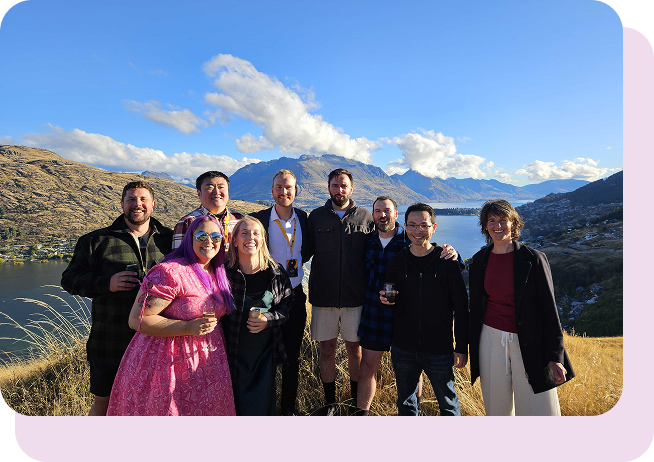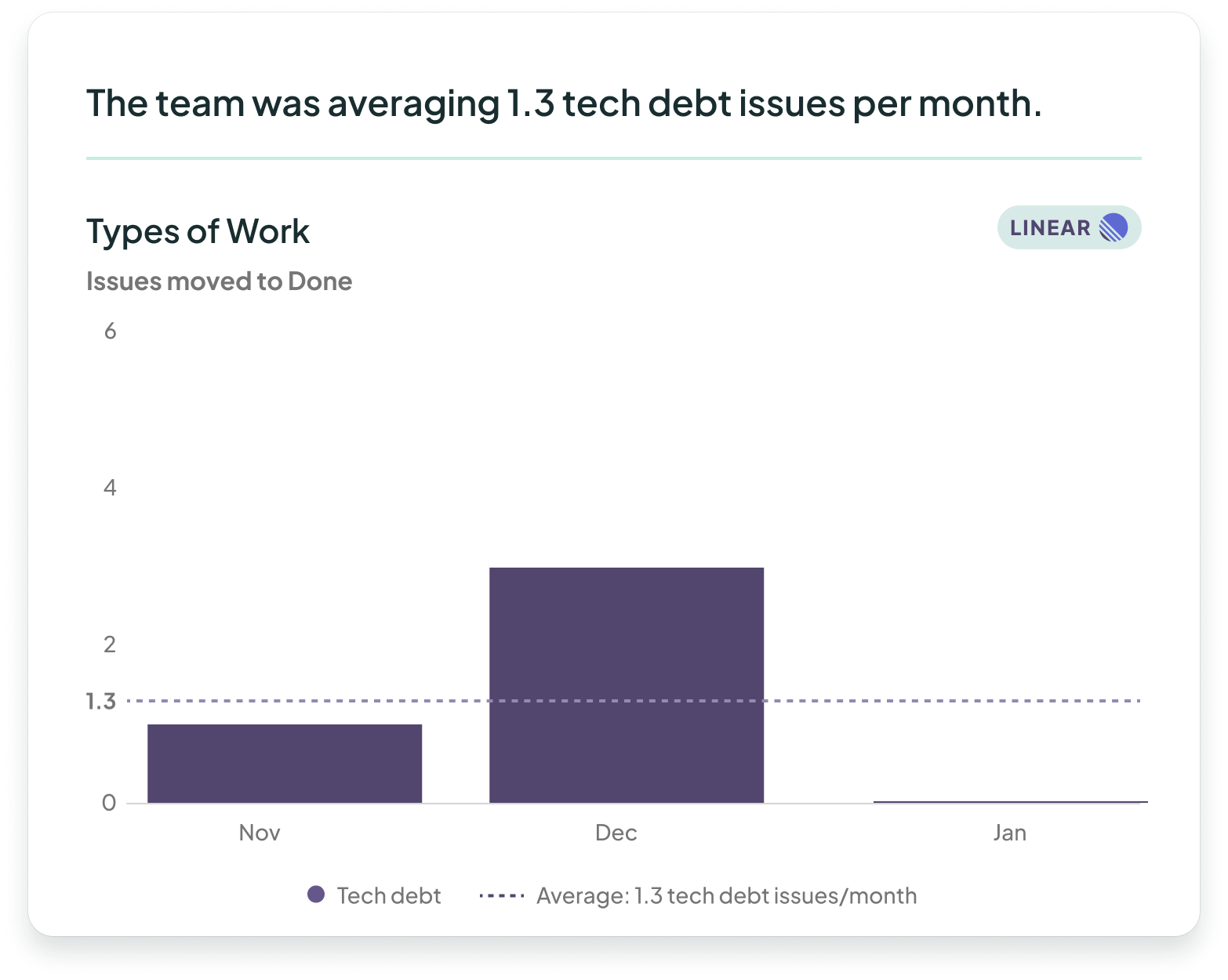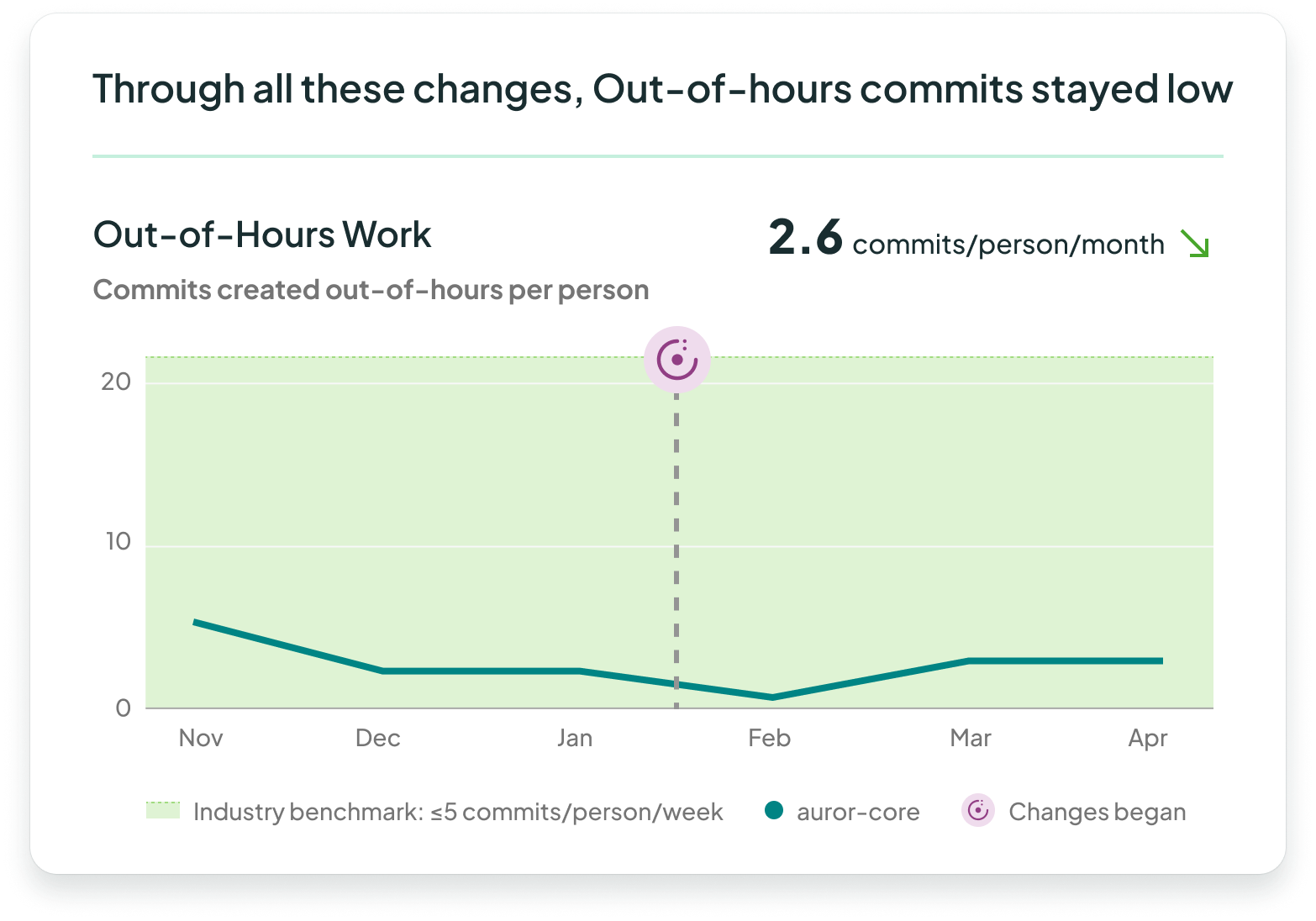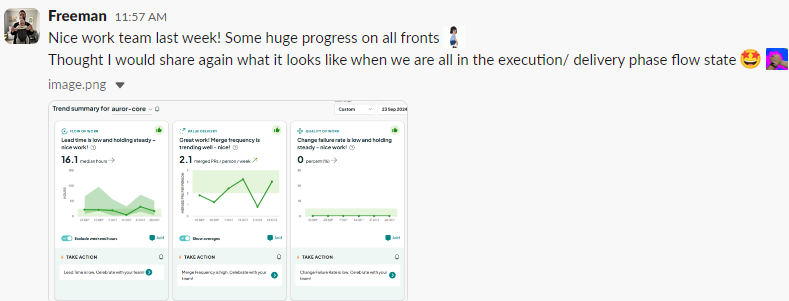



velocity, while 3x'ing the number of tech debt tickets completed.

reduction in build pipeline time.


The Challenge
James Freeman is a Senior Engineering Lead at Auror and was leading a newly established team known as Core. The team was formed with a broad and ambitious mandate, ranging from internationalization efforts to building internal tools aimed at improving the developer experience. During the formative period for this new team, James was committed to setting the Core team up for long-term success; this included balancing high care for people with high performance goals, prioritizing team health, refining ways of working, and proactively addressing technical debt to ensure the team could scale sustainably.
Forming the new team
James was eager to establish strong, open team practices from the outset. Having used Multitudes in a previous stream, he was intentional about bringing it into Core as a way to foster healthy, open conversations and support a psychologically safe team environment.
What this looked like in practice:
Multitudes insight
Since the Core team was working across so many different projects, there were a couple metrics that stood out as particularly important:
Types of Work chart is to see where the team's effort is going – and how much effort is going into different features versus tech debt, support, etc.During one of those team metric check-ins, the team noticed on the <code-text>Types of Work<code-text> chart that they hadn’t done any tech debt work over the last month, and that the amount of tech debt over the last 3 months had been lower than they wanted to do.
This made sense in context: The team had been focused on a complex, high-priority feature supporting multiple currencies, which unlocked new market opportunities and was expected to drive significant revenue. While the focus on this feature was justified due to strong demand from Auror users, the team also recognized the importance of balancing this with internal needs, like addressing tech debt, to support their fellow developers and ensure sustainable delivery over time.

The Solution
With pressure to complete the very visible feature work on time, James decided to look for a piece of tech debt that would be low-effort for his busy team but high-value for engineers across the company. He decided to bring in work to improve one of their build pipelines – it was a piece of work that would have a big impact on the quality of life for other developers while being relatively quick for his team to complete.
The Win
After just two days of effort in another busy cycle, the Core team had reduced the build pipeline from 11 minutes to 43 seconds. That’s a 93% reduction! Their internal stakeholders – the other developers across Auror – were elated to have this improvement.
What’s even better is that the team continued to check in on their metrics, so they were able to sustain the improvement. Their <code-text>Types of Work<code-text> chart showed that they were able to increase their amount of tech debt not only in the month they caught the change, but for the months following. Over the three months following, they increased the amount of tech debt they were doing by almost 3x.
.png)
“A clear view of the types of work we’re doing helps us balance features with tech debt, bugs, and support — and have more informed conversations about how we’re contributing to the full product pie.” - James Freeman, Senior Engineering Lead, Auror
They sustained the increase in tech debt even as velocity increased 2x because of the big push happening at work.
.png)
The Bonus Win
As an additional win, Auror’s Core team kept <code-text>Out-of-Hours Work<code-text> low even through this busy period. How did they do that?

Like other companies, Auror ran regular pulse checks to help leaders see how their teams were doing. However, these surveys are a lagging indicator, and their usefulness depends on how much people share. So alongside survey data, it can be helpful to look at telemetry data, since that comes in passively every day. This type of data in Multitudes meant that James could spot changes early, to support the people affected and keep the work on track.
During this period, James would proactively bring up the Wellbeing page of Multitudes with team members when they were working big weeks. This gave people on the team space to talk about not only the progress of their work but also any pressures that came up.

Through the chats above, a commitment to open conversations, and James's regular shout-outs on Slack, the team was able to create an atmosphere where they caught and addressed issues early. These kinds of people check-ins are especially important especially during a period of change like the one that this team had gone through.
“Without Multitudes, I’d be going through a sea of PRs to get these cues for how my people are doing” - James Freeman, Senior Engineering Lead, Auror
Ultimately, through open team discussions and the visibility offered by Multitudes, Auror’s Core team achieved a huge internal win on reducing build time without sacrificing the revenue-facing wins that kept external stakeholders happy. Meanwhile, having a diverse set of metrics, including ones on wellbeing, meant James could build a highly performant team that’s able to work well today and into the future.
The Future
To ensure that Auror’s Core team continues its current ways of working and delivering consistent results, James could set up the Slack notifications in Multitudes. These notifications can be set up to provide insights for retros, 1:!s, and more, and the notifications automatically adjust based on the team’s own goals.
